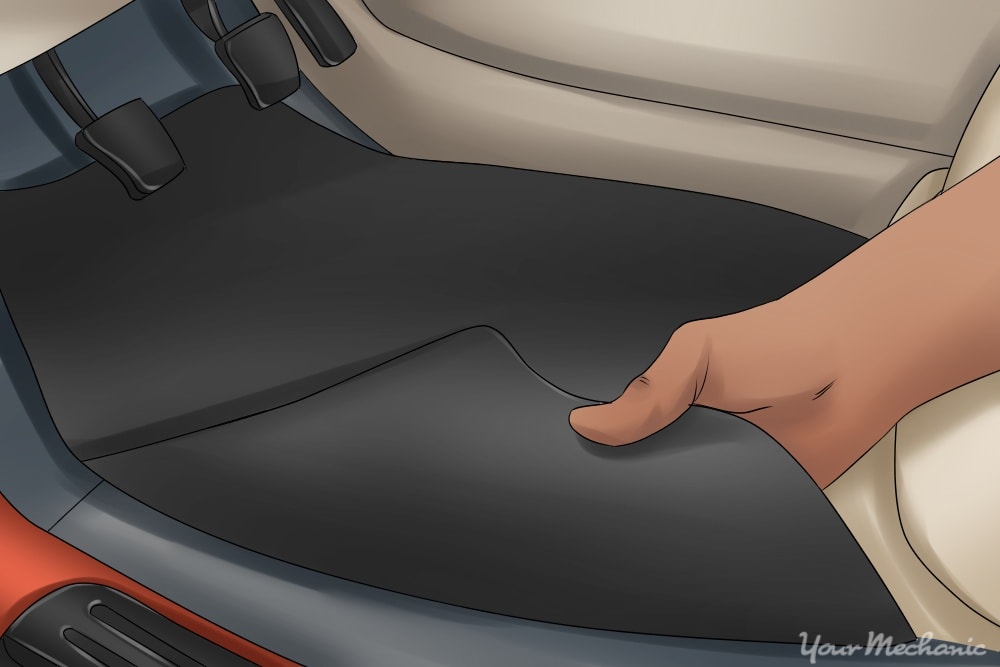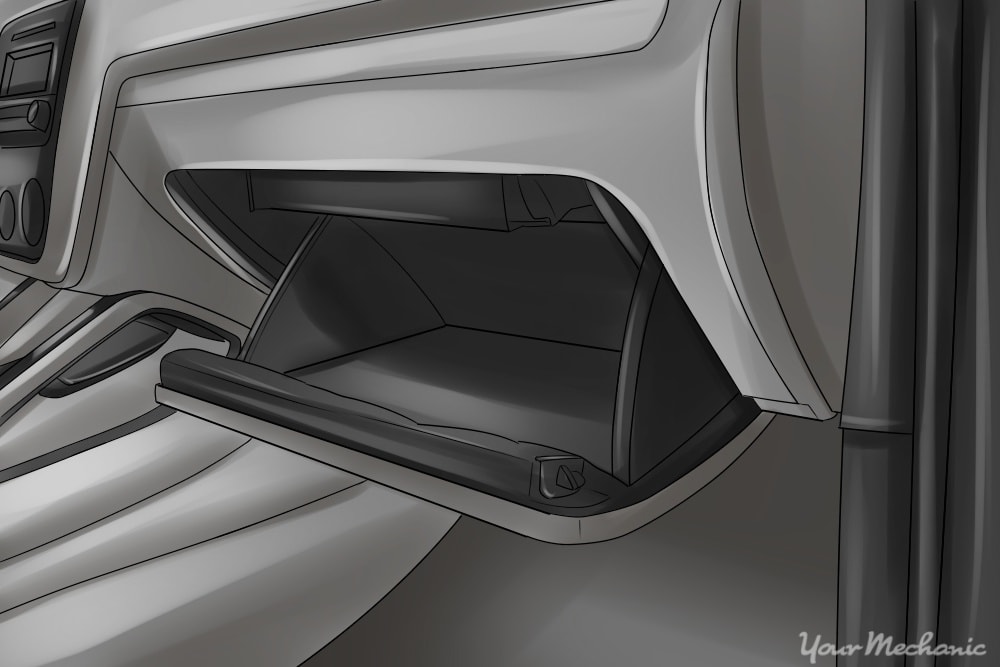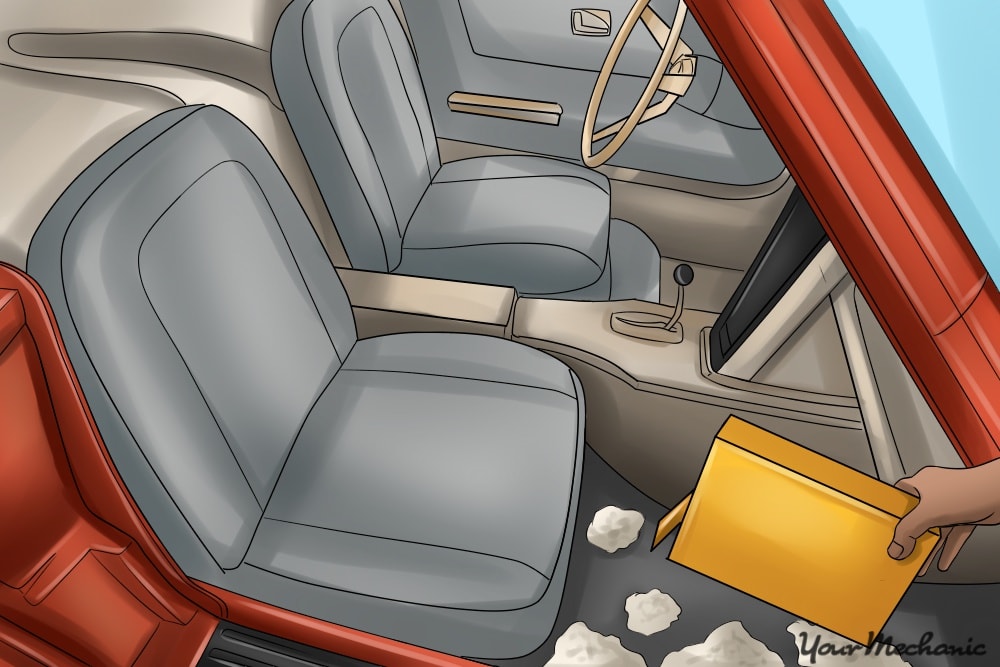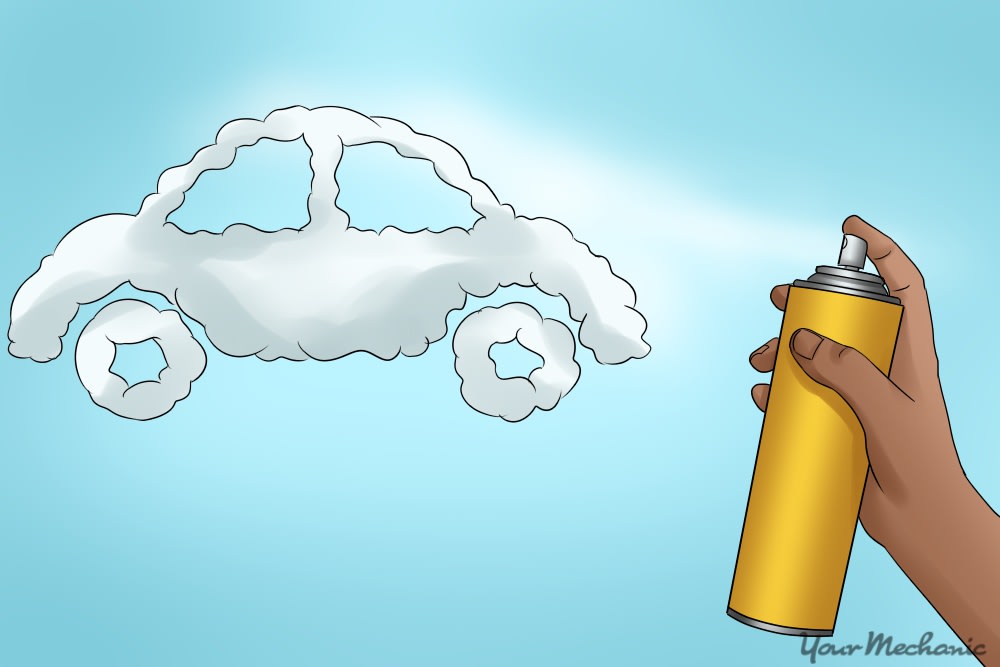

You may get inside your car only to be overwhelmed by a mysterious smell.
Odors can be caused by ordinary objects and liquids that you may never suspect. Something as simple as water spilled on a dirty seat or a child’s sippy cup dripping milk can be the culprit, or it can be something else altogether such as a mechanical problem.
To treat the issue, it’s important to discover the source and remove it. Some odors will be easier to eliminate than others, but all can be treated once you know the cause.
Here are a few of the most likely problems and some tips on getting rid of them.
Part 1 of 3: Check likely locations for odors
Step 1: Check the vehicle floor. Look on the floors in the front and rear of the vehicle and under floor mats.
Pat the area with a paper towel to check for wetness. Check if the overwhelming odor has transferred to the paper towel.
Step 2: Check the seats. Check under seats or in the back where the seat joins the back support.
Lift the rear seat cushion to check underneath for the source of the offending smell.
- Tip: Most seats simply lift out of their mounting clips while others may require screws or bolts to be removed to look underneath.
Step 3: Check all storage areas inside the car. Open up storage compartments, especially center consoles. Check door compartments and other areas where food or drinks could be left out or spilled.
Step 4: Check the carpet. Feel the carpet and seats for wet spots that could create a moldy smell.
Step 5: Check the trunk. Check the trunk for any items left inside that may be the cause of your odor. Old gym clothes or forgotten food can leave a stench that reaches the cabin.
Look inside the spare tire well to see if the smell is emanating from that area.
If you look in one specific location and the smell intensifies, you’re probably on the right track to find the source of the bad odor.
Part 2 of 3: Consider mechanical issues based on the type of smell
A bad smell in your car could indicate a problem with one of your car’s systems.
The following chart details several common odors your car can emit, the likely causes and the treatment options:
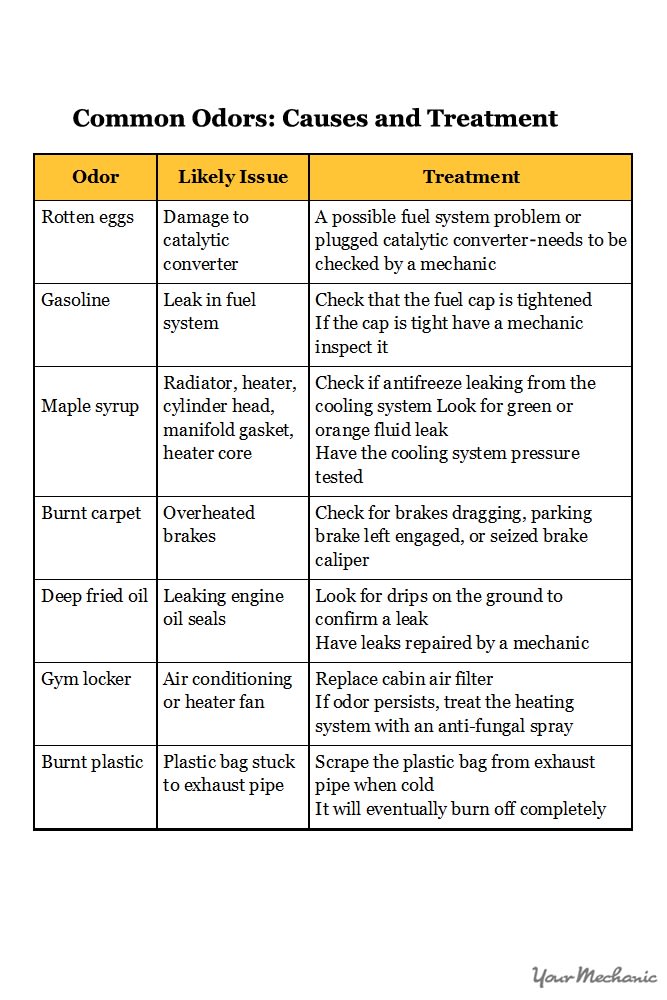
If you smell any of these odors in your car, and you determine it’s not from a spill or can’t treat the odor yourself, have your car inspected by a professional mechanic, such as one from YourMechanic.
Part 3 of 3: Clean your car
If you haven’t found the culprit and it’s not mechanical, take your car to a car wash and clean it thoroughly. You may have driven over a dead animal on the road or have a bird stuck in your car’s grille.
Step 1: Vacuum your carpets. Sprinkle baking soda on the carpets and seats before vacuuming it to absorb and eliminate odors.
- Tip: Let the baking soda sit on the upholstery for 4-6 hours if possible before vacuuming.
Step 2: Shampoo the seats and carpets. If the odor persists after vacuuming, a thorough steam cleaning with a carpet cleaner can help remove the offending odor.
Shampoo the seats as well. Steam clean the headliner to remove any airborne odors that may have soaked in.
Leather seats should be cleaned and conditioned every few months, more often if they tend to get dirty due to kids or pets.
Step 3: Replace your cabin air filter. The cabin air filter eliminates sources of odors in normal conditions but can also develop mold and mildew that cause odors itself.
Check the owner’s manual of your car to find out how to replace the air filter in your car. If you need help, request the services of a certified mechanic, such as one from YourMechanic, to replace the air filter for you.
Step 3: Wash your car’s exterior. If the smell is environmental such as a skunk spray or a dead bird, the odor may not come from something visible but will wash off with soap and water.
Spray the undercarriage thoroughly to rinse off anything underneath that may be causing the smell.
Cleaning your car will help eliminate outside odors even if you can’t identify them. If you’ve searched for the source of your odor, cleaned your car yourself, and still can’t identify the cause, have your car inspected by a professional. This process will likely remove the source of the odor, so you can enjoy the fresh smell of your car once again.


